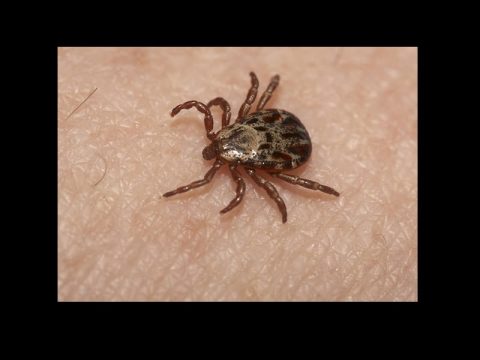HOW TO STAY SAFE FROM TICKS AND THE DISEASES THEY CARRY
With warmer weather in spring comes the start of tick season. Ticks are most active in the months of April through October and peak in the summer, according to the Centers for Disease Control and Prevention.
The bloodsucking insects aren’t just creepy; they can be dangerous, transmitting pathogens that cause a number of serious illnesses. Tick-borne diseases are on the rise, and that means prevention should be on everyone’s mind, experts say.
It’s especially important to take steps to protect yourself and your loved ones, including pets, from tick bites this time of year.
Lyme disease
One of the biggest threats from ticks is Lyme disease. It’s caused by the bacterium Borrelia burgdorferi and is transmitted to people through the bites of infected blacklegged ticks. These ticks, once limited to a few areas, have spread over the past 20 years to about half of all U.S. counties.
Each year, approximately 30,000 cases of Lyme disease are reported to the CDC by state health departments, though the actual number of cases is believed to be much higher.
Symptoms of Lyme disease include:
- Fever
- Headache
- Fatigue
- A rash that resembles a bullseye, called erythema migrans
Diagnosis is mainly based on symptoms and the possibility of having encountered infected ticks, although sometimes laboratory testing is also used and can be helpful in some cases.
Most cases of Lyme disease can be treated with antibiotics. However, if left untreated, the infection can lead to serious long-term complications and may even turn fatal. That’s a big concern because sometimes there’s no obvious rash or other symptoms early on.
Later signs and symptoms of Lyme disease that can appear days to months after a tick bite include:
- Severe headaches and neck stiffness
- Additional rashes on other areas of the body
- Arthritis with severe joint pain and swelling, particularly the knees and other large joints
- Facial palsy, or the loss of muscle tone or droop on one or both sides of the face
- Intermittent pain in tendons, muscles, joints and bones
- Heart palpitations or an irregular heartbeat
- Dizziness or shortness of breath
- Inflammation of the brain and spinal cord
- Nerve pain
- Shooting pains, numbness or tingling in the hands or feet
- Problems with short-term memory
Diagnosing Lyme disease early is key to preventing further complications. Health officials say people who receive appropriate treatment in early stages usually recover rapidly and completely.
If you are experiencing symptoms and think you may have been exposed to ticks, see your doctor right away.
Other threats from ticks
While Lyme disease may be the most widely known, there are also other tick-borne diseases to watch out for.
Just this week, officials announced a tick that’s never been seen before in the United States has been spotted in New Jersey by the thousands. The East Asian tick, sometimes called a longhorned or bush tick, has been known to spread a deadly virus called SFTS, which stands for severe fever with thrombocytopenia syndrome. So far, no cases of the illness have been reported in the U.S.
Symptoms of SFTS include fever, fatigue, chills, headache, nausea, muscle pain, diarrhea, vomiting, abdominal pain, disease of the lymph nodes and conjunctival congestion. In some cases, it can lead to death.
Other tick-borne illnesses include Powassan disease, a virus that has been called worse than Lyme but is, fortunately, rare. Only about 100 cases have been reported to the CDC over the past decade.
Borrelia miyamotoi disease (BMD) can cause fever, severe headaches and body aches. Extreme cases can be fatal.
Two other uncommon but serious tick-borne illnesses include Rocky Mountain spotted fever, which claimed the life of a 2-year-old girl in Indiana last summer, and the very rare Bourbon virus, which killed a Missouri woman a month later.
People with these diseases may experience symptoms including fever, vomiting, diarrhea and rash, while others who’ve been exposed may not exhibit any symptoms at all. That’s why it’s important to do tick checks after being outdoors, and to see a doctor if you think you may have been exposed.
How to stay safe from ticks
While some people may think they’re safe from ticks if they live in the city, this is not true. To become infected with a tick-borne disease, you do not need to live in the country.
The CDC recommends the following steps to protect yourself and your family from ticks:
- Avoid wooded and brushy areas with high grass and leaf litter, and walk in the center of trails.
- Use repellents that contain 20 to 30 percent DEET on exposed skin and clothing for protection that lasts up to several hours.
- Use products that contain permethrin to treat clothing and gear, such as boots, pants, socks and tents.
- Bathe or shower as soon as possible after coming indoors (preferably within two hours) to wash off and more easily find ticks that are crawling on you.
- Conduct a full-body tick check, using a hand-held or full-length mirror to view all parts of your body upon return from tick-infested areas.
- Examine clothing, gear and pets for ticks.





